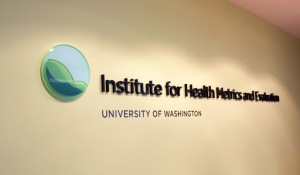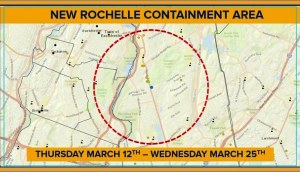

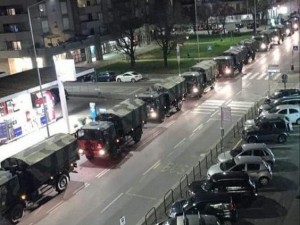

It was a time before social distancing, face masks and coronavirus vaccines.
March 11, 2020 was a Wednesday. It was also the day the world changed.
On that day, a year ago today, the World Health Organization (WHO) officially declared COVID-19 a pandemic, after the novel coronavirus was detected in more than 100 countries.
That same day, the Dow Jones plummeted into bear market territory, the National Basketball Association (NBA) abruptly halted its season, then-U.S. President Donald Trump announced a European travel ban in a national address and Tom Hanks and his wife Rita Wilson announced they had contracted the virus while filming in Australia. That was one day: March 11, 2020.
March 2020 was simply the March that never ended. Last March, the calendar may have said 31 days, but in truth it was the month without end. Never mind notions of March coming in like a lamb and going out like a lion, or vice-versa, or beware the Ides of March, that sort of thing. A year ago this month was far more terrifying, yet simultaneously, surreal than anything so pedestrian as lambs, lions and ides.
The National Center for Medical Intelligence (NCMI) at Fort Detrick, Maryland warned as far back as November 2019 that a contagion was sweeping through China’s Wuhan region, changing the patterns of life and business and posing a threat to the population. The report was the result of analysis of wire and computer intercepts, coupled with satellite images. The medical intelligence (MEDINT) cell within Canadian Forces Intelligence Command (CFINTCOM) gave a similar warning in January 2020.
As early as Jan. 23, 2020, I had written here:
Novel Coronavirus 2019-nCoV [as it was then provisionally known], which “shows signs of being far worse than SARS-CoV, has resulted in lockdowns today in two Chinese cities, Wuhan and Huanggang. The Coronavirus Study Group (CSG) of the International Committee on Taxonomy of Viruses, which is the entity within the International Union of Microbiological Societies, founded in 1927 as the International Society for Microbiology, and responsible for developing the official classification of viruses and taxa naming (taxonomy) of the Coronaviridae family, proposed the naming convention SARS-CoV-2 for COVID-19. The World Health Organization, perhaps finding the recommended name a tad too resonant politically to SARS from the not-so-distant past, opted instead for the official name COVID-19.
“Yi Guan, a Chinese virologist, who played an important role in tracing the development of SARS-CoV, said, ‘I’ve experienced so much and I’ve never felt scared before. But this time I’m scared,’ Nathan Vanderklippe, Asia correspondent for the Globe and Mail, and Alexandra Li, in Beijing, reported today.”
A few paragraphs later, I wrote “2019-nCoV was first detected last month in Wuhan City, Hubei Province, China, and the virus did not match any other known virus. The U.S. Centers for Disease Control and Prevention describes it as ‘an emerging, rapidly evolving situation.'”
Yet that same day – Jan. 23, 2020 – the Geneva-based WHO said that “now is not the time” to call a global health emergency related to a new coronavirus that has left 17 dead and more than 500 others infected in China, according to reports from the Associated Press, CTV News Channel, and other media. A “Public Health Emergency of International Concern” (PHEIC) must be an “extraordinary event” that poses a global risk and requires co-ordinated international action, according to the WHO. Global emergencies had been declared before, including for the Zika virus outbreak in the Americas, the swine flu and polio.
That decision would be revisited just a week later on Jan. 30, 2020, when, following the recommendations of its emergency committee, WHO Director General Tedros Adhanom Ghebreyesus declared that the novel coronavirus outbreak constituted a Public Health Emergency of International Concern (PHEIC).
Less than six weeks later, the WHO said a Public Health Emergency of International Concern was now a global pandemic.
The day before COVID-19 was declared a global pandemic, the New York State National Guard were deployed to the New York City suburb of New Rochelle in Westchester County to enforce a COVID-19 containment area comprising a circle with a radius of about one mile.
In Italy, scenes from the new contagion were apocalyptic by mid-March of last year. “Unfortunately we can’t contain the situation in Lombardy,” said Daniela Confalonieri, a nurse at a hospital in Milan “There’s a high level of contagion and we’re not even counting the dead any more,” she said.
Underscoring the scale of the drama, soldiers transported bodies overnight March 18 and 19, 2020 from the northern town of Bergamo, northeast of Milan, whose cemetery has been overwhelmed.
An army spokesman said 15 trucks and 50 soldiers had been deployed to move coffins to neighbouring provinces. Earlier local authorities had appealed for help with cremations as their own crematorium could not cope with the huge workload.
One of the most chilling things on this side of the Atlantic, and there have been many, that I’ve heard to date during the COVID-19 pandemic, was this audio clip posted on Twitter last March 21. I heard this brief 30-second clip on Twitter March 24, 2020, the day after the “surge” hit New York City. Tim Mak is National Public Radio (NPR’s) Washington investigative correspondent – and an emergency medical technician (EMT), which is how he got the message. Aside from the subject matter, there is something eerie about that electronically-generated voice on the automated message that went out, with this message:
“This an emergency message. This is a priority request for D.C. MRC volunteers (District of Columbia (DC) Medical Reserve Corps (DC MRC)…” (https://twitter.com/i/status/1241471610395267084)
The District of Columbia (DC) Medical Reserve Corps (DC MRC) supports the DC Department of Health (DC Health) in its role as lead for public health and medical emergency preparedness, response and recovery by recruiting, training, and deploying medical and non-medical volunteers to assist with planned events and emergencies.
Last March 30, I wrote on Facebook: “Consider this. Ordered earlier this month to “lean forward,” a military term familiar to those who serve in the United States Navy, meaning the willingness to be aggressive, to take risks, the U.S.Navy hospital ship USNS Comfort (T-AH-20), homeported at Naval Station Norfolk, Virginia, sailed from port up the Atlantic seaboard Saturday and arrived in New York Harbor this morning.
“The Comfort will provide relief for New York hospitals by taking on non-COVID-19 cases and allowing the hospitals to focus on the most critical patients suffering from the virus.
“Picture this.
“What those sailors, military doctors and nurses, officers, enlisted personnel and civilians aboard the USNS Comfort (T-AH-20) must have been thinking as they answered the call of duty and sailed north into a Biological Armageddon.”
The following day, on March 31, 2020, I posted again on Facebook, “Waking up every morning in March 2020: ‘Red alert. All hands stand to battle stations’” (https://www.youtube.com/watch?v=wV30YwXaKJg).
Since Feb. 6, 2020, COVID-19 has killed more than 530,000 people in the United States, more than influenza has in the last five years, notes the Johns Hopkins Bloomberg School of Public Health.in Baltimore. COVID-19 has a higher severe disease and mortality rate than influenza in all age groups, except perhaps children under the age of 12. “Influenza is a significant burden on the population, but COVID-19 has had a vastly larger effect,” Johns Hopkins says.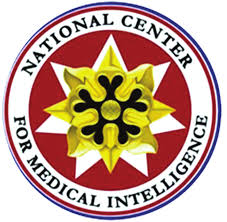
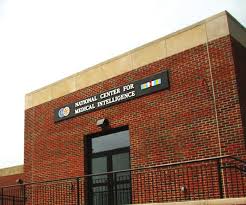
You can also follow me on Twitter at: https://twitter.com/jwbarker22
